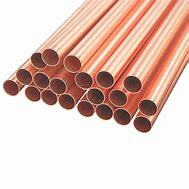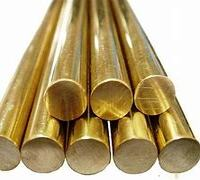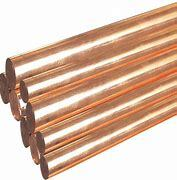1. Introduction
When you hear ‘copper rod,’ you might picture raw metal stock or basic wiring material. But in reality, copper rod plays a surprisingly sophisticated role in high-stakes industries—from ensuring lightning-safe buildings to enabling flawless copper-to-copper welds in aerospace manufacturing. Far beyond its humble appearance, this versatile conductor is engineered into specialized forms like copper earth rods, copper brazing rods, and copper bonded ground rods to meet exacting technical demands.

In this article, we’ll dive into two niche but vital applications: advanced electrical earthing and precision copper welding. We’ll also clarify how related products—such as copper strip, copper tubing, and copper round bar—complement these uses, and why professionals choose specific variants like copper clad steel earth rods or beryllium copper strip for mission-critical tasks.
2. Copper Rod in Electrical Earthing Systems
2.1. The Role of Copper Earth Rods
One of the most critical safety applications of copper rod is in grounding or earthing systems. A copper earth rod—also called an earthing rod copper or ground rod copper—is driven deep into the soil to provide a low-resistance path for fault currents, protecting both equipment and human life. Pure copper rods offer excellent conductivity and corrosion resistance, but they can be expensive and mechanically soft.
That’s where alternatives like copper bonded earthing rod and copper clad ground rod come in. These combine the conductivity of copper with the tensile strength of steel. A copper bonded steel core is electroplated or molecularly bonded with a thick layer of copper, offering durability without sacrificing performance. Similarly, copper clad steel ground rod and copper clad earth rod are widely used in telecom towers, substations, and industrial plants where long-term reliability matters.

2.2. Cost vs. Performance: Understanding Earthing Rod Price
The earthing rod price varies significantly based on material. Pure copper rods command a premium due to raw material costs—reflected in copper rod price trends—while copper bonded or copper clad options offer a cost-effective middle ground. For large-scale projects like data centers or wind farms, engineers often specify copper bonded steel for its balance of conductivity, strength, and value.
Additionally, flat conductors like copper strip for earthing (e.g., copper earth strip 25x3mm) are used to interconnect rods or connect equipment to the grounding grid. Available as flat copper strip, nickel plated copper strip, or even beryllium copper strip for high-stress environments, these strips ensure minimal impedance across the entire system.
3. Copper Rod in Precision Welding and Brazing
3.1. Why Copper-to-Copper Joining Demands Specialized Rods

Welding copper presents unique challenges due to its high thermal conductivity—it dissipates heat rapidly, making consistent fusion difficult. That’s why professionals rely on purpose-built consumables like copper brazing rod, copper welding rod, and copper to copper welding rod. These rods are formulated to match the base metal’s properties, ensuring strong, conductive joints without cracking or porosity.
For example, copper to copper brazing rods often contain phosphorus or silver alloys to lower melting points and improve wetting. Meanwhile, copper rod for welding may include deoxidizers to prevent oxidation during the process. Whether it’s repairing busbars, assembling heat exchangers, or fabricating custom copper pipework, the right welding rod copper makes all the difference.
3.2. Supporting Components: From Round Bars to Strips
Beyond rods, other copper forms support these advanced applications. A copper round bar (or round bar copper) serves as feedstock for machining custom welding electrodes or grounding connectors. Flexible copper bus bar and copper flat bar are used in switchgear and battery systems where high current capacity and bendability are needed.
Similarly, thin copper strips—like 1mm copper strip or copper strip roll—are essential in electronics and sensor manufacturing. Specialty variants such as copper beryllium strip offer spring-like properties for contacts, while copper tape for snails (a horticultural use) shows how even niche derivatives find unexpected roles.
4. Related Copper Products in Context
While copper rod takes center stage in earthing and welding, it rarely works alone. Air conditioning copper pipe—often labeled as aircon copper tube or ac copper pipe—requires precise bending and soldering using compatible copper pipe fittings. Technicians use copper pipe soldering techniques that mirror those in rod-based welding, emphasizing cleanliness and flux control.
Meanwhile, recycling efforts often involve stripping copper wire for scrap. Though burning copper wire for scrap is discouraged (due to toxic fumes), the best way to strip copper cable involves mechanical strippers or automated tools—especially when recovering copper strip wire or preparing copper metal strips for resale. Prices for recovered materials, like copper strip price or 1oz copper price, fluctuate with global markets, influencing decisions on whether stripping wire for recycling is worthwhile.
5. Conclusion
From safeguarding skyscrapers with copper bonded ground rods to enabling flawless joints with copper to copper brazing rods, the copper rod proves its worth far beyond basic conduction. Its adaptability—through alloys, cladding, and geometry—makes it indispensable in fields where failure isn’t an option. Whether you’re sourcing a copper clad steel earth rod for a solar farm or selecting the right copper round bar for a custom busbar, understanding these niche applications ensures optimal performance, safety, and value.
Our Website founded on October 17, 2012, is a high-tech enterprise committed to the research and development, production, processing, sales and technical services of ceramic relative materials such as Why. Our products includes but not limited to Boron Carbide Ceramic Products, Boron Nitride Ceramic Products, Silicon Carbide Ceramic Products, Silicon Nitride Ceramic Products, Zirconium Dioxide Ceramic Products, etc. If you are interested, please feel free to contact us.

